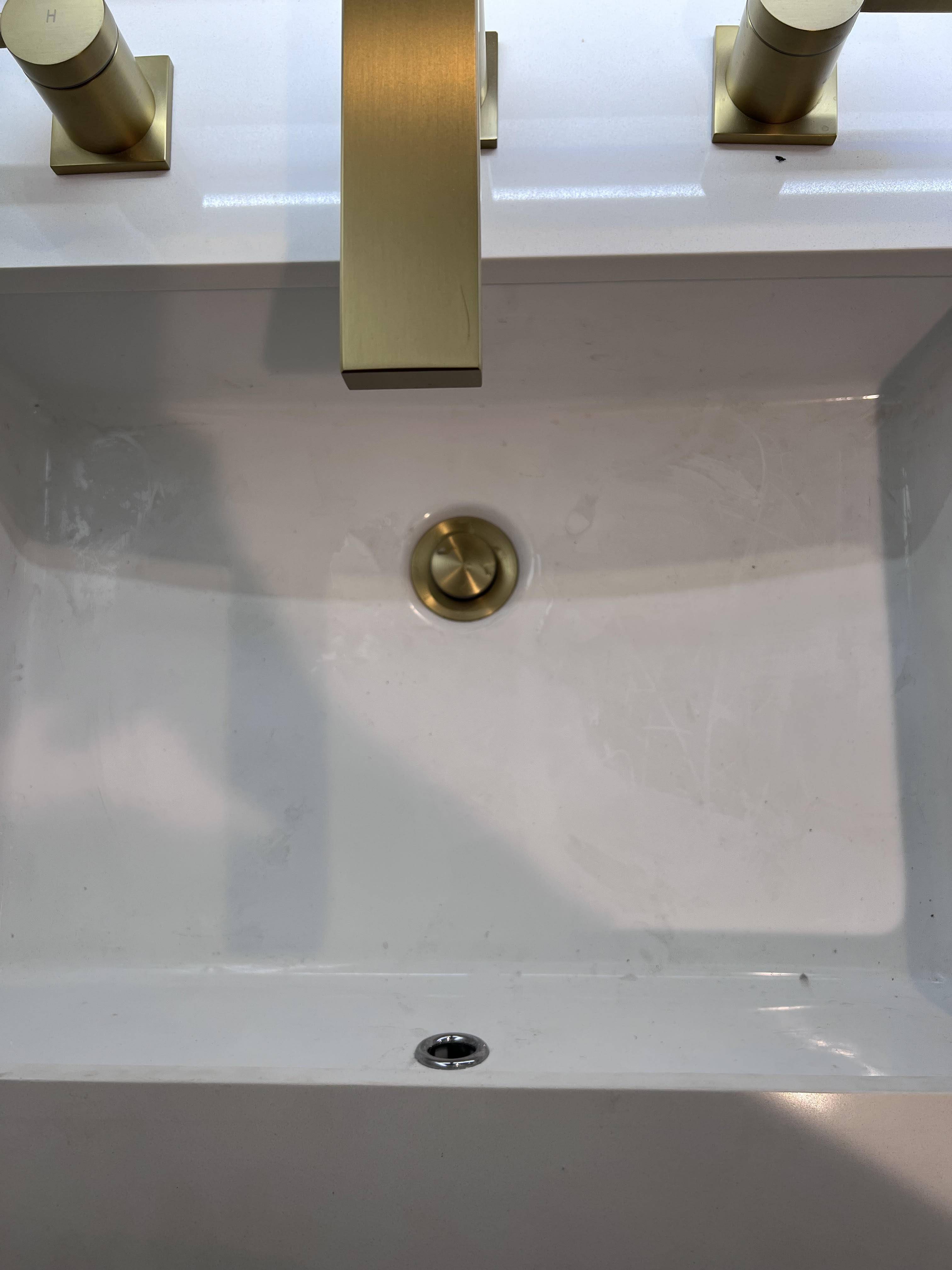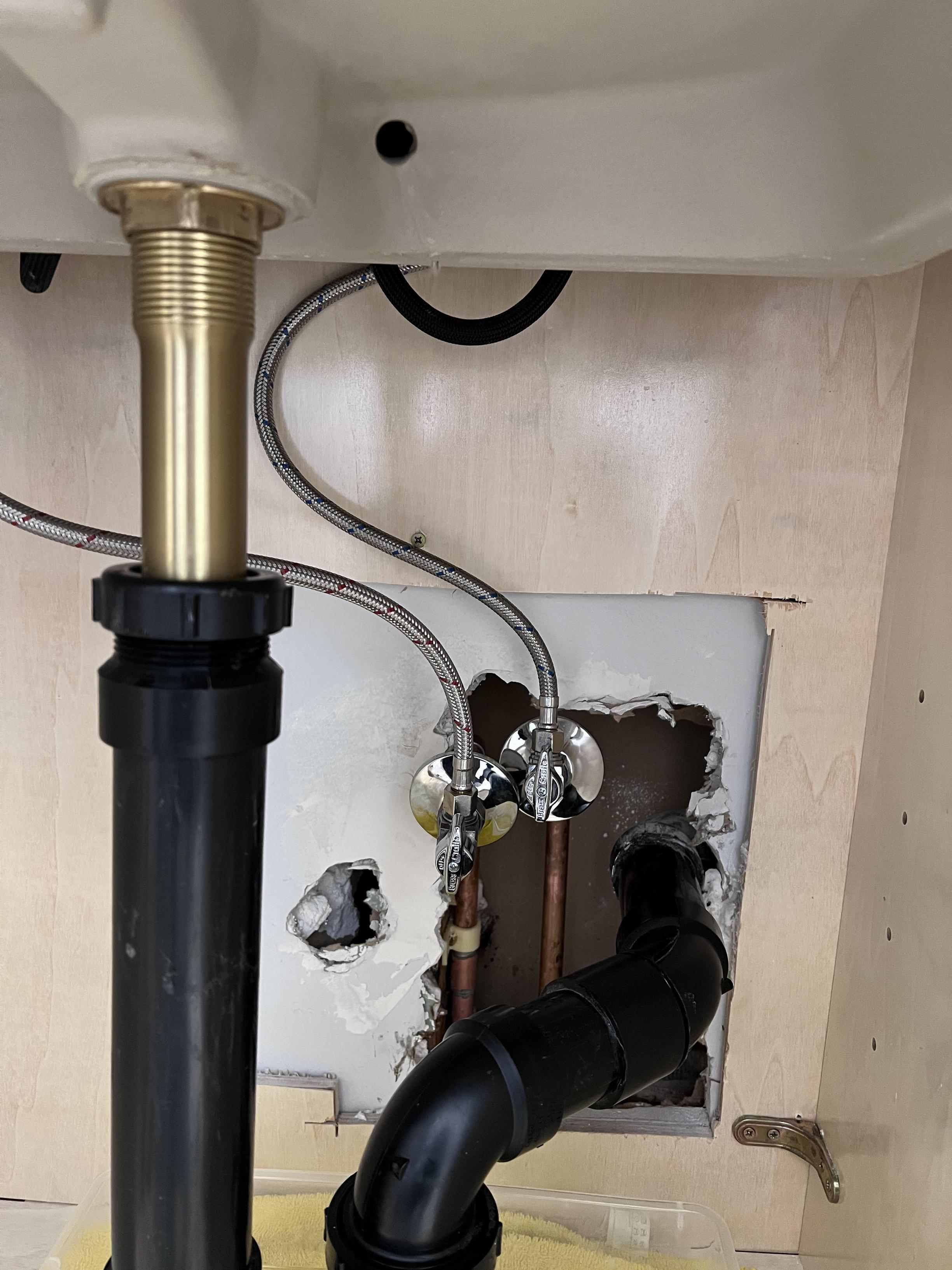Let's start off with some basic diagnostics before calling a plumber (who will do the same thing for an hourly fee).
Testing the sink
You should engage the stopper at the bottom of the sink and then fill the water to just below the overflow hole of the sink (the chrome port in your picture). Dry everything off underneath and let the sink sit for an hour or so. With water just sitting there, you should have no leaks. If you do, it's most likely the drain assembly at or below the bowl.
Testing the faucet
If at all possible, turn on the faucet to where it leaks and crawl in on your back with a flashlight. Can you see where the water is coming from? If so, you've solved the mystery.
If you can't see where the leak is, the next step is to disengage the faucet from the sink. There should be a ring or set of screws to do that. Don't disconnect the water lines yet. Now, lift up the faucet, turn it on to leaking, and lift the center assembly up to look for leaks. You may have to repeat these steps for the handles, since they are a separate piece.
These are your only potential sources of a leak. Be tenacious and you can find the source.
Fixing the leak
If it's the drain, re-seat the assembly and make sure to tighten it up. Use some petroleum jelly if need be to help the seals engage better. The "wedge" screw-in seal at the bottom of the assembly can sometimes be problematic if the sink has slight manufacturing defects in the hole.
If it's the faucet, it could be the supply lines weren't tightened properly. Some of the fancy faucets have "goof proof" push connectors that aren't as easy as the manufacturers would like you to believe (I had a brand new one that took 5 re-seats to ensure it didn't leak). If it doesn't screw down with a gasket, it could still leak.





